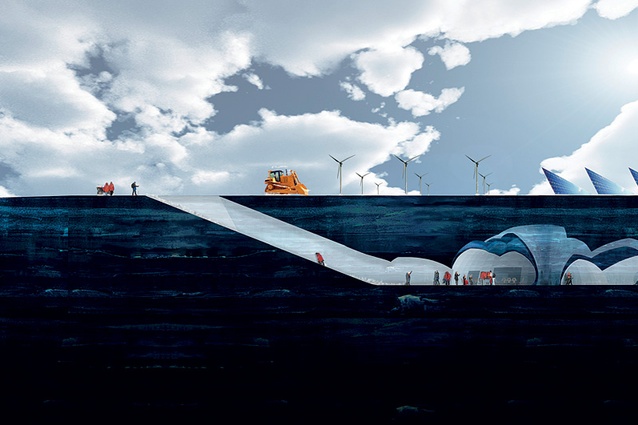Chilled Architecture
Architecture is often cool but this British Council touring exhibition highlighting architectural innovation at Antarctic research stations shows that contemporary architecture there is thoroughly chilled. As well as enabling scientists to live and work more comfortably and efficiently in this extreme polar environment, the new bases are extraordinary design statements. The Norwegian explorer Carsten Borchgrevink, who with nine companions built the first structures there, two pinewood huts at Cape Adare (1899), would be astonished.
The exhibition focuses on five case studies illustrating this new genre of extreme architecture: Halley VI (United Kingdom), Princess Elisabeth (Belgium), Bharati (India), Jang Bogo (South Korea) and a speculative Iceberg Living Station. The aim is to stimulate dialogue to further our understanding of Antarctica and of the critical research being undertaken there, particularly scientists’ monitoring of the ozone layer and climate change.
Commissioned by the British Antarctic Survey and designed by UK practice Hugh Broughton Architects, Halley VI station (2013) on the Brunt Ice Shelf is one of only two Antarctic research stations sited on floating ice. It is the first in the world that is capable of being relocated.
Its modular design echoes Ron Herron’s peripatetic Walking City (1964) and also various high-tech architects’ advocacy for using pods to house different services.
Perched on a rocky outcrop in Queen Maud Land, the aerodynamic stainless steel structure of Princess Elisabeth Station (2009) was designed by the International Polar Foundation to withstand strong Antarctic winds. It is the first zero-emission station in Antarctica, seamlessly integrating renewable wind and solar energy, water-treatment facilities and passive building technologies. Its energy efficiency is maximised by a smart grid and its layered structure means that it is not necessary to heat its interior.

The German practice bof arkitekten designed the strikingly modernist Bharati Station (2013), located at Larsemann Hills. Clad in aluminium, it was constructed from 134 prefabricated shipping containers that had been used to transport its other building materials to the site. Unlike earlier battened-down Antarctic buildings, its extensive glazing provides researchers with panoramic views during the long hours of summer daylight.
At Terra Nova Bay, Jang Bogo research station (scheduled for completion in 2014) will be one of the largest bases on the continent. Its aerodynamic triple-arm design, by South Korean practice Space Group, will resist the continent’s bad weather.
The speculative Iceberg Living Station (MAP Architects, Denmark), constructed entirely from ice, takes its cue from compacted snow igloos in the Arctic. It would be excavated from a large iceberg, obviating the need to ship materials to Antarctica. As it would eventually melt, over a period of seven to ten years, dismantling and removing the structure at the end of its utility would not cause environmental problems.
Shown first at the Lighthouse Gallery in Glasgow, the exhibition will tour internationally after Manchester, to undetermined venues.
A southern hemisphere venue such as New Zealand would be pertinent. Meanwhile, an eBook with essays by Dr David Walton (British Antarctic Survey) and Sam Jacob (FAT Architecture) is at available for download at http://www.artscatalyst.org/projects/detail/e-book_ice_lab/











